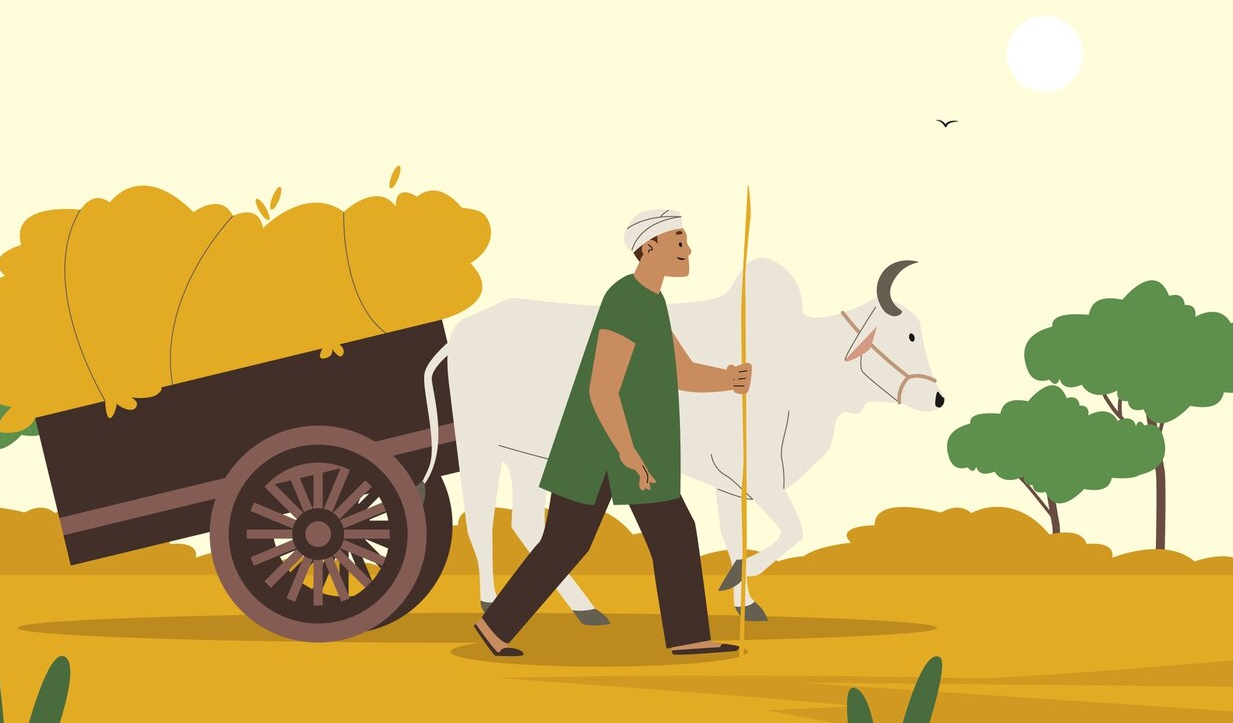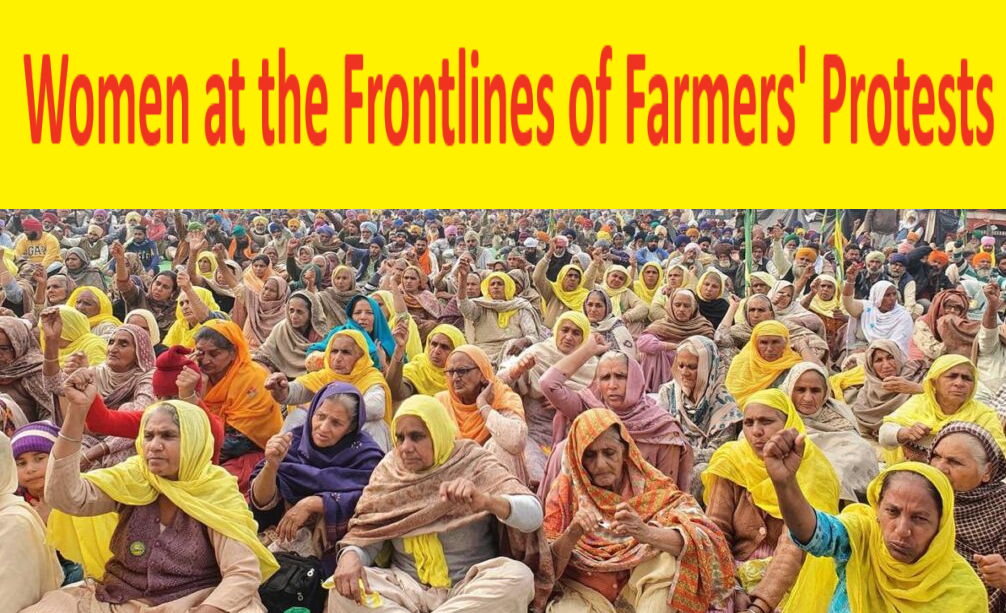T
he 2020–2021 Indian Farmers’ Protest was a major movement in India that began in late 2020 and continued into early 2021. The protests were primarily against three agricultural bills passed by the Government of India in September 2020: the Farmers’ Produce Trade and Commerce (Promotion Act and Facilitation, the Farmers (Empowerment and Protection) Agreement on Price Assurance and Agricultural Services Act and the Essential Commodities (Amendment) Act.
Farmers from across India, primarily from Punjab, Haryana and Uttar Pradesh, opposed the laws, fearing that they would deregulate the agricultural sector and leave them vulnerable to corporate exploitation. They argued that the laws would abolish the Minimum Support Price (MSP) system, which provided farmers with a guaranteed price for their crops.
The protests gained widespread attention and support, with farmers organizing large-scale demonstrations, sit-ins, and marches. They demanded the repeal of the contentious laws and a legal guarantee for MSP. The protests also sparked debates about the larger issues of agricultural reform, farmers’ rights, and the role of corporate interests in agriculture.
Despite numerous meetings between the government and farmers’ unions, a solution could not be initiated. But in November 2021, after a year of protests, the Indian government agreed to repeal our agricultural policy, marking a major victory for the opposition. The decision is seen as a recognition of the patience and determination of the farmers’ movement.

2020 2021 indian farmers protest leaders
The farmers’ strike in India in 2020-2021 had a huge impact; Many farmers’ organizations and leaders took to the stage on behalf of the protesters. Some of the important leaders and names associated with antisemitism are:
Rakesh Tikait:
He became an important leader of the struggle for the Indian Kisan Union (BKU). Tikait’s call in his televised speech in January 2021 attracted public attention and support for the opposition.
Balbir Singh Rajewal:
Another important leader associated with BKU, Rajewal played a key role in organizing the protest and negotiating with the government.
Darshan Pal:
A spokesperson for the Samyukta Kisan Morcha (SKM), an umbrella body representing various farmer unions, Darshan Pal was actively involved in coordinating the protests and representing the interests of farmers.
Yogendra Yadav:
A political activist and leader of the Swaraj India party, Yogendra Yadav lent his support to the farmers’ protests and played a role in mobilizing public opinion in favor of the movement.
Gurnam Singh Chaduni:
A farmer leader from Haryana, Chaduni joined BKU and played a key role in mobilizing farmers in the state for a strike.
Medha Patkar:
A social activist known for her work in many fields, Medha Patkar continues to support and support the farmers’ strike on social justice issues.
These are just a few of the leaders who played prominent roles in the 2020–2021 Indian farmers’ protest. The movement was characterized by its decentralized nature, with leadership emerging from various farmer unions and civil society organizations.

indian farmers protest reason
The farmers’ strike in India in 2020-2021 is mainly due to the Indian government passing three housing reform bills in September 2020. These bills aim to change the sea change in Indian agriculture. The main reasons for farmers’ protests are:
The 2020-2021 Indian farmers’ protests were largely triggered by the passage of three agricultural reform bills by the Indian government in September 2020. The aim of these bills was to bring about significant changes in the agricultural sector of India. The main reasons for farmers’ protest are:
Farmers’ Livelihood Concerns: Farmers feared that the new laws would deregulate the agricultural sector and allow corporate interests to control agricultural markets and harm their livelihoods. They were worried that this would lead to a decrease in farm income and aggravate the existing economic problems of farmers.
Minimum Support Price (MSP) System: Farmers demanded the retention of the Minimum Support Price (MSP) system, which ensures that farmers get guaranteed minimum prices for their produce. They feared that the new law would weaken or eliminate the MSP system, leaving it vulnerable to price fluctuations and corporate exploitation.
Loss of negotiating power: Farmers fear the new law will lead to the demise of traditional agricultural markets such as the Agricultural Produce Market Committees (APMCs) over which they have been debating. They fear this leaves them at the mercy of big businessmen who can dictate prices and trading terms.
Lack of consultation: Farmers criticized the government for passing the law without adequate consultation with stakeholders, especially farmers. supplied. They argue that these laws were created without taking into account the concerns and views of those directly affected.
Threats to landowners: Farmers fear new laws could pave the way for agricultural control. It can lead to land consolidation and loss of landowners on small and marginal farms.
Solidarity with Farmers: The protests also gained momentum due to solidarity among farmers across various states in India, particularly from Punjab, Haryana, and Uttar Pradesh. The sense of unity and collective action among farmers contributed to the widespread mobilization and sustained protests.
Overall, the Indian farmers’ protest of 2020–2021 was driven by a combination of economic, social, and political factors, with farmers expressing their concerns about the potential impact of the agricultural reform laws on their livelihoods and well-being.
Indian farmers protest outcome
Indian farmers’ protests in 2020-2021 had significant results, the most important of which were the three controversial agricultural issues that sparked the protests, namely the repeal of the law. The main achievements are as follows.
Repeal of Farm Acts: The Government of India on November 19, 2021 announced the repeal of three Farm Acts in the Winter Assembly. This decision was a direct response to the demands of protesting farmers and was a great victory for the farmers’ movement.
Legislative Process: The government introduced the Agriculture Repeal Bill in Parliament and it was later passed without much opposition from the Lok Sabha (Lower House) and Government House (Upper House). Repealing the laws meets one of the basic needs of farmers by making them ineffective.
Committee formed: In order to address the concerns of farmers and find solutions to the ongoing problems, the Government of India has formed a committee to address agricultural reforms and other related issues. The task force worked to develop recommendations for agricultural reform in collaboration with stakeholders, including agricultural organizations.
Assurance on Minimum Support Price (MSP): The Indian government reiterated its commitment to the Minimum Support Price (MSP) system and stated that it would continue to support farmers through procurement at MSP rates. This assurance was aimed at addressing the farmers’ concerns about the potential weakening of MSP under the repealed laws.
Release of Protesters: Following the announcement of the repeal of the farm laws, there were reports of the release of several protesters who had been detained or arrested during the course of the protests. The release of protesters was seen as a gesture of goodwill by the government.
Continued dialogue: Despite the repeal of farm rules, dialogue between the government and farmer organizations continued on various agricultural issues including MSP, farm subsidy and other agricultural reforms. This ongoing dialogue demonstrates a commitment to addressing the broader concerns of the farming community.
Overall, the outcome of the Indian farmers’ protests in 2020-2021 was marked by the repeal of controversial farm laws and the initiation of further talks and debates on agrarian reforms to address the concerns of the farming community.

When did the latest protests?
On March 13, thousands of farmers from the northern state of Punjab announced “Delhi Chalo” (We are going to Delhi) and sent bedding and food in trucks and tractors.
But during the attack, security forces used tear gas and water cannon to force them to stop, as the camp was about 200 kilometers (125 miles) from where they started.
Clashes have broken out between protesters and security forces in the last few weeks; farmers said one protester died and several others were injured due to police brutality.
What do farmers want?
Farmers’ organizations demand government support and legal guarantee of the minimum purchase price of their products.
Prime Minister Narendra Modi’s government scrapped some provisions of the 2021 agricultural reform policy and promised to hold a meeting to find ways to ensure price support for all agricultural products in the wake of similar strikes. Farmers accused the government of being slow to fulfill its promises.
Opposition parties also want the government to fulfill its promise of doubling revenue and keeping revenue at least 50 percent of total spending. He is still waiting for the government to take action to prosecute the leader, whose son was arrested on suspicion of fleeing and killing four demonstrators in the 2021 protests.
Thousands of Indian farmers protested in New Delhi, demanding a law to guarantee minimum crop prices
New Delhi Thousands of Indian farmers protested on Thursday Indian farmers protested in an Indian city, demanding a new law. Ensuring minimum prices for agricultural products. A few weeks after they were banned from entering the city, the crops fell.
After the police closed the main road in the city with concrete barriers and iron barriers, they went to New Delhi by bus and train instead of bus and train. tractor. Police also banned the use of agricultural vehicles in accordance with the municipal contract. Participants were also prohibited from carrying sticks or swords to avoid conflict with police.

Protesters organized a petition demanding free electricity for agriculture. They argue that unless they guarantee a minimum price for their crops, they will be at the mercy of the market, which would be disastrous, especially since two-thirds own less than 1 hectare (2 1/2 acres) of land. . he said
The meeting was organized by the United Peasant Front and was held in Ramlila Square, which is used for celebrations, important meetings and entertainment.
According to the Press Trust of India news agency, the police also announced a condition that the number of participants in this demonstration should not exceed 5,000 people.